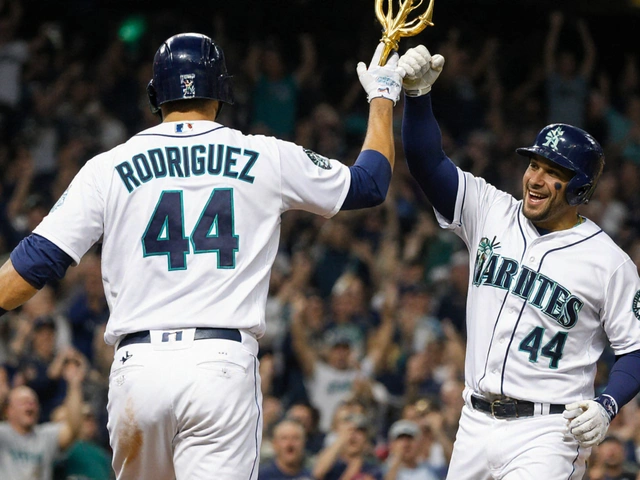When NVIDIA quietly released its third-quarter fiscal 2026 financial update in 2025, few expected the headline to be a penny. But there it was: a quarterly cash dividend of exactly $0.01 per share — one cent — payable on December 26, 2025, to shareholders on record as of December 4, 2025. No earnings guidance. No revenue figures. Just a tiny, precise, legally binding promise to pay investors a fraction of a dollar for every share they hold.
A Penny That Speaks Volumes
It’s easy to dismiss $0.01 as insignificant. After all, NVIDIA’s stock trades above $800 a share, and its market cap hovers near $3 trillion. But this isn’t about the money. It’s about signaling. In the world of public markets, even the smallest dividend carries weight. It says: We’re profitable. We have cash. We’re not just reinvesting everything into AI chips and data centers — we’re thinking about our shareholders too. NVIDIA hasn’t paid a dividend since 2020, when it briefly reinstated one before pausing again amid its explosive growth. Now, with $34 billion in cash on hand as of its last reported quarter, the company may be testing the waters. Is this the start of a new policy? Or just a symbolic gesture to appease institutional investors who demand yield? The timing is curious. The payment date — December 26, 2025 — falls on a Friday, right after Christmas. That’s unusual. Most companies avoid holiday-week payouts to prevent delays in bank processing. But NVIDIA chose it anyway. Why? Maybe they know their shareholders won’t mind. Or maybe they’re just confident the system will handle it.The Mechanics of a Penny Dividend
The structure is textbook. Record date: December 4. Payment date: December 26. That’s a 22-day gap — perfect for T+2 settlement cycles. If you bought NVIDIA stock on December 3 and held it through the close, you’re in. Sell on December 5? You’re out. No gray area. No ambiguity. The dividend is not cumulative. Not special. Not a one-off. It’s labeled “quarterly cash dividend,” meaning this could be the first of four such payments in fiscal 2026. The language in the press release is ironclad: “NVIDIA will pay its next quarterly cash dividend of $0.01 per share…” No “may,” no “intends to.” This is a legal obligation. And yet — no one is quoted. No CFO, no CEO, no spokesperson. Just a sterile, robotic press release posted on investor.nvidia.com. No earnings call. No slides. No analyst Q&A. That’s rare for a company of NVIDIA’s size. Usually, they flood the wires with commentary. This time? Silence.Who Gets Paid — And Who Doesn’t
Every shareholder who held NVIDIA stock at market close on December 4, 2025, gets a cent. That’s 1.4 billion shares outstanding, according to the latest SEC filing. So total payout: $14 million. For a company that rakes in $20 billion in quarterly revenue, that’s pocket change. But here’s the twist: those pennies add up fast for long-term investors. Someone who bought 1,000 shares in 2018 and held them through the AI boom now owns over 5,000 shares after splits. That’s $50 in dividends every three months — $200 a year. Not life-changing. But it’s income. And in a world where interest rates are still above 4%, even small yields matter. Retail investors on Reddit and X are already debating it. “Is this a sign they’re slowing down?” one user asked. “Or are they just being polite?” Another pointed out: “If they start paying more, they’ll need to raise prices. And then the AI bubble might pop.”Why This Matters Beyond the Dividend
NVIDIA’s decision to announce a dividend — even a tiny one — breaks a long-standing pattern. Since 2021, the company has treated every dollar as fuel for R&D: AI chips, Blackwell architectures, AI software stacks, data center expansion. They didn’t need to return capital. They were growing too fast. Now, they’re not. Growth is still strong — but slowing from 150% year-over-year to 40%. The market is asking: Can you keep this up? Are you becoming a mature tech giant? This dividend could be NVIDIA’s first step toward redefining its identity. Not just the AI king. But a reliable, cash-generating business — like Intel or AMD — that rewards patience. Analysts at Morgan Stanley and Bernstein have noted that while $0.01 is trivial, the *intent* is not. “It’s a signal to the bond market,” said one. “They’re telling us they’re stable enough to commit to regular payouts. That lowers perceived risk.”
What’s Next?
The next milestone is December 26, 2025 — when the first of these pennies hits brokerage accounts. But the real question is: What happens in March 2026, when NVIDIA reports Q4 fiscal 2026 results? Will they hint at another dividend? Will they raise it to $0.02? Or will they quietly revert to stock buybacks — their old favorite? One thing’s certain: investors will be watching. Because in Silicon Valley, where growth used to be everything, the return of dividends — no matter how small — is a cultural shift.Historical Context: NVIDIA’s Dividend History
NVIDIA first paid a dividend in 2005 — $0.005 per share. It increased to $0.01 in 2007, then suspended it in 2008 during the financial crisis. It returned in 2012 at $0.02, then paused again in 2015. The company reinstated it in 2019 at $0.16 per quarter, only to suspend it again in 2020 as AI demand surged. The $0.01 dividend announced now is the lowest since 2005. But unlike those earlier suspensions, this one comes after a decade of explosive growth — not during a downturn. That makes it more meaningful.FAQ
Frequently Asked Questions
How does this $0.01 dividend affect NVIDIA shareholders?
Shareholders who owned NVIDIA stock at market close on December 4, 2025, will receive $0.01 per share on December 26, 2025. For someone with 1,000 shares, that’s $10. While small, it’s a rare form of direct return in a company that previously reinvested all profits. For long-term holders, even pennies add up — and this signals potential future payouts.
Why did NVIDIA choose such a small dividend amount?
The $0.01 amount is likely symbolic — low enough to avoid triggering tax complications for retail investors, yet high enough to signal commitment. It allows NVIDIA to test market reaction without committing significant cash. Analysts believe it’s a trial balloon before potentially raising the payout in 2026.
Is this dividend taxable?
Yes. The $0.01 per share dividend is considered ordinary income for U.S. taxpayers and will be reported on Form 1099-DIV. For most retail investors, it’s too small to matter significantly, but for those holding NVIDIA in taxable accounts, it adds to annual income. Qualified dividend status depends on holding period and may apply if shares were held over 60 days.
What does this mean for NVIDIA’s stock price?
Historically, dividend announcements by high-growth tech firms like NVIDIA often cause minor short-term volatility, but rarely major moves. The stock may dip slightly on the ex-dividend date (December 5, 2025) as the price adjusts for the payout. Long-term, this could attract income-focused institutional investors, potentially broadening NVIDIA’s investor base beyond growth traders.
Will NVIDIA raise this dividend in the future?
It’s possible. If NVIDIA’s cash flow remains strong and growth stabilizes, a raise to $0.02 or $0.03 per quarter in 2026 is plausible. But the company has never committed to dividend growth. Investors should watch the Q4 fiscal 2026 earnings call in March for hints — or lack thereof — about future payouts.
Why wasn’t this announced with earnings?
NVIDIA chose to separate the dividend announcement from its Q3 fiscal 2026 earnings release — possibly to avoid distracting from the financial results, which may have been underwhelming. By isolating the dividend as its own event, the company can control the narrative: this isn’t about performance, it’s about capital policy. A smart, subtle move.





